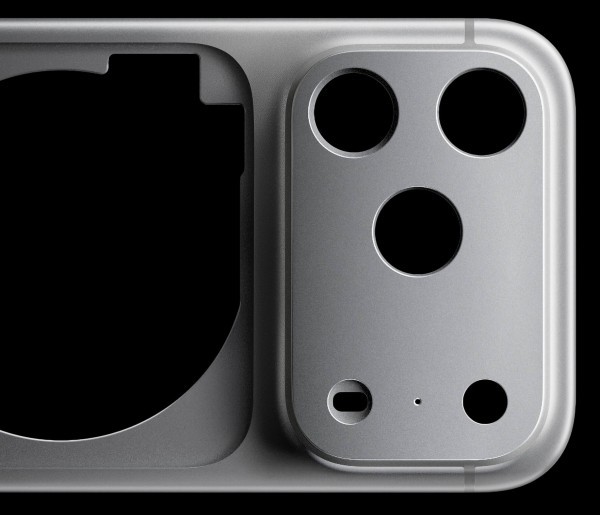Resources
Resources
Geometric Dimensioning and Tolerancing (GD&T) Basics for Precision CNC Machining
- Introduction to GD&T in CNC Machining
- What is Geometric Dimensioning and Tolerancing (GD&T)?
- The Language of Precision: GD&T Symbols
- Datum Reference Framework: The Foundation of GD&T
- Categories of Geometric Tolerances
- Demystifying Position Tolerance
- Why GD&T Matters for CNC Machining
- Shenzhen Yixin Precision: Your Zero-Defect CNC Machining Partner
- Conclusion: Embracing Precision with GD&T
<a id="introduction-to-gdt-in-cnc-machining"></a>
Introduction to GD&T in CNC Machining
In the world of precision manufacturing, the difference between a functional component and scrap often comes down to the smallest detail. For engineers, parts suppliers, and purchasing managers, clear communication of design intent is paramount. This is where Geometric Dimensioning and Tolerancing (GD&T) steps in.
GD&T is a universal language that ensures components are manufactured and inspected precisely as intended by the designer. It's more than just a set of rules; it's a strategic approach to defining product geometry, optimizing functionality, and minimizing manufacturing costs.
At Shenzhen Yixin Precision, we understand that achieving unparalleled accuracy in CNC machining requires a deep mastery of GD&T. Our commitment to this rigorous standard ensures that every component we produce meets the highest levels of quality and performance.

<a id="what-is-geometric-dimensioning-and-tolerancing-gdt"></a>
What is Geometric Dimensioning and Tolerancing (GD&T)?
Geometric Dimensioning and Tolerancing (GD&T) is a symbolic language used on engineering drawings to explicitly define the nominal (theoretically perfect) geometry of parts and the allowable variation (tolerances) from that nominal geometry. It provides a standardized method for defining feature relationships and geometric controls.
Unlike traditional coordinate dimensioning, which specifies allowable size variations, GD&T focuses on controlling the actual shape, orientation, and location of features. This method ensures that parts not only fit together but also function correctly within an assembly.
Key aspects of GD&T include:
- Clear Communication: Eliminates ambiguity in design intent between design, manufacturing, and inspection teams.
- Functional Control: Ensures parts perform their intended function by controlling critical features.
- Cost Efficiency: Reduces scrap, rework, and inspection time by providing clear, unambiguous requirements.
- Global Standard: Based on standards like ASME Y14.5 (USA) and ISO (international), making it universally understood.
<a id="the-language-of-precision-gdt-symbols"></a>
The Language of Precision: GD&T Symbols
The foundation of GD&T lies in its comprehensive set of gd signs and symbols GD. These symbols convey complex geometric requirements concisely. Understanding these gd sign elements is crucial for anyone involved in design, manufacturing, or quality control.
Here's a breakdown of common GD&T symbols and their functions:
| Symbol | Name | Category | Description |
|---|---|---|---|
| ○ | Circularity | Form | Controls the roundness of a circular feature. |
| ⌭ | Cylindricity | Form | Controls the overall roundness and straightness of a cylinder. |
| ⏥ | Flatness | Form | Controls the allowable variation of a surface from a perfect plane. |
| — | Straightness | Form | Controls the straightness of a line or a feature's axis. |
| ⟂ | Perpendicularity | Orientation | Controls the perpendicularity of one feature to another datum. |
| ∠ | Angularity | Orientation | Controls the angular relationship of one feature to another datum. |
| ∥ | Parallelism | Orientation | Controls the parallelism of one feature to another datum. |
| ⌖ | Position | Location | Defines the allowable variation of a feature's location from its true position. |
| ⌴ | Concentricity | Location | Controls the median points of features relative to a datum axis. |
| ↔ | Symmetry | Location | Controls the symmetrical relationship of features relative to a datum plane or axis. |
| ⌒ | Profile of a Line | Profile | Controls the profile of a 2D line element. |
| ⌓ | Profile of a Surface | Profile | Controls the profile of a 3D surface. |
| ↗ | Runout | Runout | Controls the combined effect of form, orientation, and location errors for a rotating feature. |
| ⤢ | Total Runout | Runout | Controls the combined effect of all form, orientation, and location errors for a rotating feature along its entire length. |
These symbols, often seen in gd and t pdf resources, are applied within a Feature Control Frame (FCF), which provides the tolerance value, datum references, and material condition modifiers.

<a id="datum-reference-framework-the-foundation-of-gdt"></a>
Datum Reference Framework: The Foundation of GD&T
Central to GD&T is the concept of datums. A datum is a theoretically perfect point, line, or plane that serves as a fundamental reference for dimensions and tolerances. It acts as a stable origin from which other features are located or oriented.
Without datums, geometric tolerances would be meaningless, as there would be no consistent reference for measurement. The selection of appropriate datums is critical for capturing the functional requirements of a part.
A Datum Reference Frame (DRF) typically consists of three mutually perpendicular datums (Primary, Secondary, Tertiary).
- Primary Datum: The first feature contacted during assembly or the most critical feature for stability. It restricts three degrees of freedom (e.g., translation in X, Y, Z for a plane).
- Secondary Datum: The second feature contacted, restricting two additional degrees of freedom.
- Tertiary Datum: The third feature contacted, restricting the final degree of freedom.
This hierarchical system ensures that parts are consistently measured and manufactured relative to their functional requirements, mirroring how they will behave in an assembly.
<a id="categories-of-geometric-tolerances"></a>
Categories of Geometric Tolerances
To define geometric tolerance effectively, GD&T organizes its symbols into five main categories. Each category addresses a specific aspect of a feature's geometry, ensuring comprehensive control over the part's form, orientation, location, and profile.
| Category | Controls | Example Symbols |
|---|---|---|
| Form | Individual features; how close a feature is to its ideal shape. | Straightness (—), Flatness (⏥), Circularity (○), Cylindricity (⌭) |
| Orientation | The angular relationship of a feature to a datum. | Perpendicularity (⟂), Parallelism (∥), Angularity (∠) |
| Location | The position of a feature relative to a datum or other features. | Position (⌖), Concentricity (⌴), Symmetry (↔) |
| Profile | The allowable variation of a surface or line from its true profile. | Profile of a Line (⌒), Profile of a Surface (⌓) |
| Runout | The allowable composite error of a surface of revolution during rotation. | Runout (↗), Total Runout (⤢) |
These categories highlight GD&T's ability to precisely control every facet of a part's geometry, ensuring interchangeability and functional performance. When working with a zero-defect supplier like Shenzhen Yixin Precision, this level of detailed specification is crucial.

<a id="demystifying-position-tolerance"></a>
Demystifying Position Tolerance
Among the various geometric tolerances, geometric tolerance position is one of the most frequently used and powerful. It specifies the allowable deviation of a feature's true (theoretically exact) position from its defined nominal location.
Unlike traditional coordinate tolerances that create a square or rectangular tolerance zone, position tolerance defines a cylindrical or spherical tolerance zone around the true position. This allows for more material condition flexibility and often results in larger, more practical tolerance zones for manufacturing.
Key elements of position tolerance:
- True Position: The theoretically exact location of a feature, defined by basic dimensions from datums.
- Tolerance Zone: A 3D boundary (often cylindrical for holes, spherical for points) within which the feature's axis or center point must lie.
- Material Condition Modifiers: Often associated with position tolerance:
- Maximum Material Condition (MMC) (Ⓜ): When a feature contains the maximum amount of material (e.g., largest pin, smallest hole). Allows additional tolerance if the feature deviates from MMC.
- Least Material Condition (LMC) (Ⓛ): When a feature contains the minimum amount of material (e.g., smallest pin, largest hole).
- Regardless of Feature Size (RFS) (Ⓢ or no symbol): Tolerance applies regardless of the feature's actual size.
Understanding geometric tolerance position is vital for ensuring precise assembly and functionality, especially for components with multiple mating features. It's a testament to how GD&T facilitates intelligent design for manufacturability.
<a id="why-gdt-matters-for-cnc-machining"></a>
Why GD&T Matters for CNC Machining
For high-precision CNC machining, GD&T is not merely a suggestion; it's a necessity. It bridges the gap between design intent and manufacturing reality, directly impacting efficiency, cost, and product quality.
- Unambiguous Instructions: GD&T eliminates guesswork for CNC programmers and machine operators. The precise definition of feature relationships ensures that components are machined to meet critical functional requirements, reducing errors and rework.
- Optimized Manufacturing Processes: With clear GD&T specifications, manufacturers can select the most appropriate machining strategies and inspection methods. This leads to more efficient production cycles and reduced setup times.
- Enhanced Quality Control: GD&T provides a clear framework for inspection. Quality control personnel can confidently verify parts against defined geometric tolerances, ensuring consistent product quality and simplifying the approval process.
- Reduced Costs: By minimizing misinterpretations and ensuring first-time-right manufacturing, GD&T significantly reduces scrap rates, eliminates unnecessary rework, and lowers overall production costs. It allows for larger, more functional tolerance zones where appropriate, preventing over-tolerancing.
- Global Collaboration: As a standardized language, GD&T facilitates seamless collaboration across international supply chains, ensuring consistent understanding and execution regardless of geographical location.
<a id="shenzhen-yixin-precision-your-zero-defect-cnc-machining-partner"></a>
Shenzhen Yixin Precision: Your Zero-Defect CNC Machining Partner
At Shenzhen Yixin Precision, our expertise in CNC machining is deeply rooted in a profound understanding and application of GD&T. As a zero-defect supplier, we recognize that true precision goes beyond just holding tight dimensions; it's about delivering components that perfectly fulfill their intended function.
Our commitment to GD&T translates into tangible benefits for our clients:
- State-of-the-Art Equipment: We invest in advanced multi-axis CNC machines and cutting-edge metrology equipment (CMMs, optical comparators) capable of verifying even the most intricate GD&T callouts.
- Expert Engineering Team: Our engineers and machinists are highly trained in the latest GD&T standards (ASME Y14.5 and ISO), ensuring accurate interpretation of design specifications and optimized manufacturing processes.
- Rigorous Quality Control: Every part undergoes meticulous inspection, where GD&T is the guiding principle. Our comprehensive quality management system guarantees that each component meets or exceeds specified geometric tolerances.
- Proactive Communication: We collaborate closely with our clients, offering design for manufacturability (DFM) insights informed by GD&T principles to optimize designs for cost-effectiveness and performance.
Partnering with Shenzhen Yixin Precision means choosing a manufacturer that speaks the language of precision fluently. From prototype to high-volume production, we are dedicated to delivering geometrically perfect parts, every time.

<a id="conclusion-embracing-precision-with-gdt"></a>
Conclusion: Embracing Precision with GD&T
Geometric Dimensioning and Tolerancing is an indispensable tool in modern manufacturing, serving as the bedrock for precision and reliability. By providing a clear, unambiguous language for defining design intent, GD&T empowers engineers to create functionally superior products and manufacturers to produce them with exceptional accuracy.
For parts suppliers, engineers, and purchasing managers, a solid grasp of GD&T basics is no longer optional – it's a competitive advantage. It ensures that components fit, function, and perform as expected, reducing costly errors and speeding up time to market.
Shenzhen Yixin Precision stands ready as your trusted partner, leveraging deep GD&T expertise and advanced CNC machining capabilities to bring your most challenging designs to life. When precision, quality, and a zero-defect mindset are paramount, choose a supplier committed to excellence through the power of GD&T. Contact us today to discuss your next precision machining project.
geometric dimensioning and tolerancing basics,gd and t pdf,gd sign,gd signs and symbols GD,define geometric tolerance,geometric tolerance position,Shenzhen Yixin Precision,CNC machining
Related News
Privacy Disclosure and Data Protection
In Yixin Precision Metal and Plastic Ltd., we prioritize the protection of our customers' and visitors' privacy. As a responsible company, it is our utmost priority to ensure that all personal data is treated confidentially and used in accordance with applicable data protection laws.
What does Privacy Disclosure mean to us?
Privacy disclosure is not just a legal obligation for us; it is a principle to which we are dedicated. We commit to treating any information entrusted to us during our business relationships with the utmost confidentiality. This includes both personal data of our customers and business information and trade secrets.
How we protect your data
To ensure the security of your data, we employ state-of-the-art technologies and security measures. Our systems are designed to prevent unauthorized access, misuse, or loss of your information. Additionally, we regularly train our employees on handling sensitive data and data protection regulations to maintain the highest standards.
Disclosure of information
We do not disclose personal data of our customers or visitors to third parties unless express consent is given or we are legally obligated to do so. In cases where we engage service providers or partner companies for data processing, we ensure that they also adhere to strict data protection standards.
Your rights
As a customer or visitor, you have the right to access, correct, delete, or restrict the processing of your data. Please contact us if you have any questions about our privacy practices or if you wish to exercise your rights.
Changes to this Privacy Policy
We reserve the right to change or update this privacy policy at any time. Please check this page regularly for updates.
Contact Us
If you have any questions or concerns about our privacy practices, please do not hesitate to contact us. We are here to assist you.
Yixin Precision Metal and Plastic Ltd Code of Conduct
In Yixin Precision Metal and Plastic Ltd, we place great emphasis on integrity, ethical behaviour, and professionalism in all our endeavours. Our Code of Conduct forms the backbone of our corporate culture and obligates all employees and partners to uphold the highest standards regarding business practices, work environment, and social responsibility.
1. Integrity and Ethics
We commit to acting honestly, fairly, and transparently. Our actions are always guided by the highest ethical principles, and we avoid any form of fraud, bribery, corruption, or unfair business practices.
2. Respect in the Workplace
We value diversity and foster a work environment characterized by respect, tolerance, and appreciation. Discrimination, harassment, or any form of inappropriate behaviour are not tolerated.
3. Data Privacy and Confidentiality
We respect the privacy of our customers, employees, and business partners and treat all information confidentially. Personal and business data are protected in accordance with applicable data protection laws and our internal policies.
4. Quality and Customer Satisfaction
We strive for excellence in product quality and customer service. Our aim is to exceed the needs and expectations of our customers and build long-term, trusting relationships.
5. Environmental Responsibility
We are mindful of our responsibility to the environment and aim for sustainable business practices. We strive for resource efficiency, waste minimization, and compliance with environmental regulations.
6. Social Responsibility
We actively contribute to the well-being of the communities in which we operate. Through voluntary efforts, donations, and other initiatives, we support social projects and contribute to positive change.
7. Compliance with Laws and Regulations
We strictly adhere to all applicable laws, regulations, and standards in the countries where we operate. We are committed to a high level of compliance and integrity in all our business activities.
At Yixin Precision Metal and Plastic Ltd, the Code of Conduct is more than just a document; it is a promise we make to our employees, customers, suppliers, and society as a whole. We take our responsibility seriously and strive to achieve the highest standards every day.


























